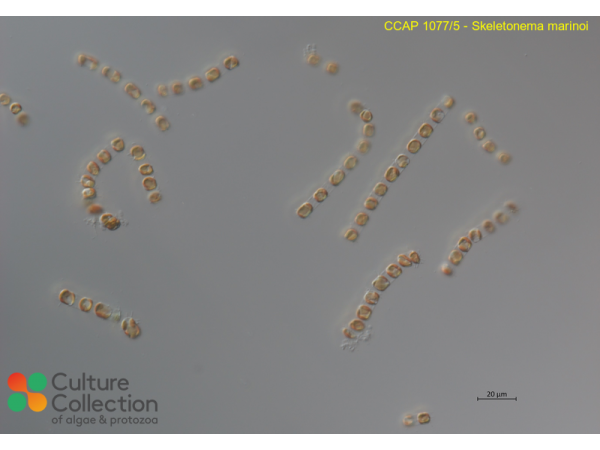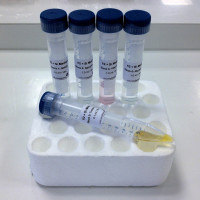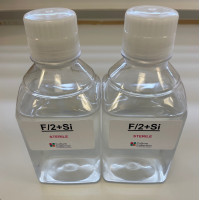References [ 20 ]
Day JG, Benson EE & Fleck RA (1999) In Vitro Culture and Conservation Of Microalgae: Applications For Environmental Research, Aquaculture & Biotechnology. In Vitro Cellular & Developmental Biology - Plant 35: 127-136.
Wilson RC, Watts SJ, Vives i Batlle J & McDonald P (2009) Laboratory and field studies of polonium and plutonium in marine plankton. Journal of Environmental Radioactivity 100: 665-669.
Christophersen G, Torkildsen L & van der Meeren T (2006) Effect of increased water recirculation rate on algal supply and post-larval performance of scallop (Pecten maximus) reared in a partial open and continuous feeding system. Aquacultural Engineering 35: 271-282.
Wilson RC, Vives i Batlle J, Watts SJ, McDonald P & Parker TG (2007) Uptake and depuration of 131I from labelled diatoms (Skeletonema costatum) to the edible periwinkle (Littorina littorea). Journal of Environmental Radioactivity 96: 75-84.
Morelli E, Marangi ML & Fantozzi L (2009) A phytochelatin-based bioassay in marine diatoms useful for the assessment of bioavailability of heavy metals released by polluted sediments. Environmental International 35: 532-538.
Sandaa R-A, Brunvold L, Magnesen T & Bergh Ø (2008) Monitoring the opportunistic bacteria Pseudoalteromonas sp. LT-13 in a great scallop, Pecten maximus hatchery. Aquaculture 276: 14-21.
Kooistra WHCF, Sarno D, Balzano S, Gu H, Andersen RA & Zingone A (2008) Global diversity and biogeography of Skeletonema species (Bacillariophyta). Protist 159: 177-193.
Magnesen T & Jacobsen A (2012) Effect of water recirculation on seawater quality and production of scallop (Pecten maximus) larvae. Aquacultural Engineering 47: 1-6.
Volkman JK, Jeffrey SW, Nichols PD, Rogers GI & Garland CD (1989) Fatty acid and lipid composition of 10 species of microalgae used in mariculture Journal of Experimental Marine Biology and Ecology 128: 219-240.
DOI: none
Watson GJ, Bentley MG, Gaudron SM & Hardege JD (2003) The role of chemical signals in the spawning induction of polychaete worms and other marine invertebrates. Journal of Experimental Marine Biology and Ecology 294: 169-187.
Penna A, Crinelli R & Magnani M (1996) Modulation of the heat shock ubiquitin pool in Skeletonema costatum (Bacillariophyceae). Journal of Phycology 32: 409-415.
DOI: none
Yoon HS, Hackett JD & Bhattacharya D (2002) A single origin of the peridinin- and fucoxanthin- containing plastids in dinoflagellates through tertiary endosymbiosis. PNAS 99: 11724-11729.
Yoon HS, Hackett JD, Pinto G & Bhattacharya D (2002) The single, ancient origin of chromist plastids PNAS 99: 15507-15512.
Réveillon D, Abadie E, Séchet v, Masseret E, Hess P & Amzil Z (2015) β-N-methylamino-L-alanine (BMAA) and isomers: Distribution in different food web compartments of Thau lagoon, French Mediterranean Sea. Marine Environmental Research 110: 8-18.
Orejas C, Gori A, Rad Menéndez C, Last KS, Davies AJ, Beveridge CM, Sadd D, Kiriakoulakis K, Witte U & Roberts JM (2016) The effect of flow speed and food size on the capture efficiency and feeding behaviour of the cold-water coral Lophelia pertusa. Journal of Experimental Marine Biology and Ecology 481: 34-40.
Anderson SR & Menden-Deuer S (2016) Growth, grazing, and starvation survival in three heterotrophic dinoflagellate species. Journal of Eukaryotic Microbiology 64: 213-225.
Yamada M, Otsubo M, Tsutsumi Y, Mizota C, Nakamura Y, Takahashi K & Iwataki M (2017) Utility of mitochondrial-encoded cytochrome c oxidase I gene for phylogenetic analysis and species identification of the planktonic diatom genus Skeletonema Phycological Research -: -.
Garvetto A, Badis Y, Perrineau M, Rad Menéndez C, Bresnan E & Gachon CMM (2019) Chytrid infecting the bloom-forming marine diatom Skeletonema sp.: Morphology, phylogeny and distribution of a novel species within the Rhizophydiales Fungal Biology 123: 471-480.
Diéguez AL, Balboa S, Magnesen T, Jacobsen A, Lema A & Romalde JL (2019) Comparative study of the culturable microbiota present in two different rearing systems, flow‐through system (FTS) and recirculation system (RAS), in a great scallop hatchery Aquaculture Research 51: 542-556.
McLeod AR, Brand T, Campbell CN, Davidson K & Hatton A (2021) Ultraviolet radiation drives emission of climate-relevant gases from marine phytoplankton. Journal of Geophysical Research: Biogeosciences 126: 9.





